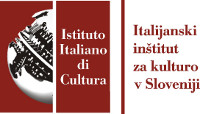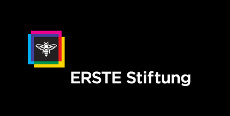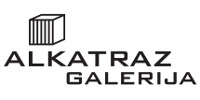Azra Akšamija, Julieta Aranda & Anton Vidokle, Jože Barši, Cittadellarte - Fondazione Pistoletto* and Michelangelo Pistoletto, The Collection, the Museum and the History presented by Walter Benjamin, Domestic Research Society, Irwin, Isola Art Center, Janez Janša, Janez Janša, Janez Janša, Kontekst Collective, Trevor Paglen, Marko Peljhan, Tadej Pogačar, Marjetica Potrč, Marija Mojca Pungerčar, Raqs Media Collective, Marko Sančanin, Igor Štromajer, Apolonija Šušteršič, Dragan Živadinov::Dunja Zupančič::Miha Turšič
Curated by Zdenka Badovinac
Opening of the 1:1 STOPOVER at the Museum of Contemporary Art Metelkova, Maistrova 3, on Thursday, 17 October 2013, at 8 p.m. 1:1 STOPOVER is produced by Moderna galerija in Ljubljana and the Maska Institute.
Exhibition program and public debates may be found on the exhibition web page.
Not interested in showcasing art, 1:1 would be better called a stopover for art than an exhibition, since 1:1 art can never be wholly contained in the time frame of an event.
The focus of the 1:1 stopover is the relationship between art and life, and art and institution. When on a scale of 1:1, art not only describes life, it is one with it. This relation can be disrupted by the institution, which is often thought to divorce art from life. Not so, however, when the institution itself tries to establish a similar one-to-one relationship with art by no longer merely representing it, but instead treating it as a partner.
One of the major issues addressed by the 1:1 stopover is the relation between the event providing the framework for the presentation of art and the duration of the art. Because, 1:1 art can last months, years, even decades. 1:1 art follows the rhythm of life, finding realization in various moments and forms of its existence that not even the artists can always fully control. 1:1 art has a past, a present, a future, and sometimes also an end, a death (when the artist deliberately destroys his or her work). It is never a wholly finalized product, and this makes 1:1 only a moment in the duration of 1:1 art. When an institution acknowledges its own inability to represent the complex temporality of 1:1 art in all of its life forms, it can only offer a place where such art can become a public good, a place where its various users can come together. This point of connection is the place of common interests, where the roles of curator, artist, and audience are often swapped or overlap.
1:1 art refers to more than just art objects; above all, it refers to points of convergence of collective ideas and desires, of various vocations and various narratives. Conversely, everything produced on some scale other than 1:1 designs life, basically subjugating it. 1:1 art determines needs at the grass roots level, in direct contact with people and their ways of organizing, of uncovering the shortcomings and manipulations of planning. It can itself be a plan or potential for change, a corrective to the conditions of organizing and conceiving.
1:1 art proposes conditions that do not involve anyone representing anyone, conditions under which interpretations and translations result from actual, concrete collaborations. It combines theory and practice, art and science and technology, experts and knowledge from below, in order to impact specific socio-political circumstances and help improve future conditions. Such art acts connectively in society, devising alternative models of cultural and knowledge production, violating the existing economy of time and formal identity of citizenry, and even conceiving of human creativity beyond our planet. It advocates fairness in conditions of work and self-organizing at the level of local communities, and invents ways of trading in work and time that do not produce surplus value. Artists working on a scale of 1:1 build artist institutions, artist banks, even artist states. Or they fix the mistakes in, and stimulate the functioning of, the museum where they are exhibiting. They also think about a new art institution by observing the old one from a meta-position, as if as an antiquity, as though they were seeing it from the vantage point of the future.
By virtue of duration, 1:1 artworks avoid being wholly contained by the institution and resist the postindustrial dictate of constant change and quick adaptation. They oppose the culture of forever new events replacing one another as well as the kind of institution that presents temporariness as flexibility, failing to see that it has thus lost its own duration, its own time. 1:1 art is a glitch in the system of provisional states that result in instability and increasingly anxiety-ridden individuals with no free time and a low quality of life. Lasting and enduring, 1:1 art gives back their time to life and the institution.
1:1 forms part of the Three Orders of Time event organized by Maska between 15 and 19 October 2013 to celebrate its 20th anniversary. Reconsidering the modes of contemporary art production, the event focuses on three periods: the early 1990s and the emergence of private initiative in artistic production (private institutes as the prevalent contemporary model of production in art); the present (art production that transcends the limitations of the project-logic); and the future (1:1 also includes the Archive-Reminder of the Arteast 2000+23 project, organized jointly by Moderna galerija and Maska in 2006 and presenting work-proposals by 50 artists for the Moderna galerija collection to be exhibited in 2023).
* Yoav Weiss
invites: Naomi Gerstein, Assaf Rahat, Yonat Cintra, Michal Rivlin, Ilan Dotan
Alejandro Vasquez Salinas
invites: Daniel Gil, Yesenia Rodriguez Bedoya, Víctor Munoz, Ika Putranto,Yumemi Kobayashi
CTRLZAK (Katia Meneghini e Thanos Zakopoulos)
invites: Harris Kodosfiris, Nikos Sereal, Yuangyung, Alistair Gentry, 2:pm
(Paul & Mathiew)
Nataša Perković
invites: Dragana Antonić, Amila Handžić, Renata Papišta, Dejan Slavuljica
Chalie Jeffery
invites: Aurélie Godard, Camila Oliveira Fairclough, Philippa Jeffery, Jon Lockhart, Virginie Yassef.
The project was supported by




Special thanks to

 Slovenian Cinemateque
Slovenian Cinemateque